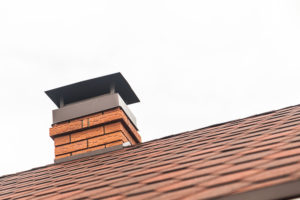



The fireplace has been incorporated into homes since time began. It has evolved from a humble source of heat which was also used for cooking to an aspirational part of the modern sitting room. Turner Baker ltd has been working in the chimney Birmingham industry for over 15 years dealing with everything from the hearth up to the chimney pot. If you’d like to learn more about our chimney Birmingham services, please call 01173 360470
For something so traditional, chimneys do seem to involve an awful lot of jargon. Here are some of the most regularly used terms with definitions:
Chimney
This is the structure that provides ventilation for hot flue gases or smoke from a boiler, stove, furnace or fireplace to the outside atmosphere. If your chimney projects above the roof, then you will have a chimney stack. The most common type of chimney is a chimney pot, which is usually a terracotta or ceramic,pot-shaped tube. Most chimney pots are fitted with a cowl which stops any rain or birds from entering your chimney pipe. Your chimney will have a chimney breast built in which is a portion of the chimney itself that projects forwards to accommodate a fireplace. Similarly, your chimney will have jambs, that also project from the side walls to support the chimney breast. You chimney pot is held in place on your roof with flaunching made out of cement.
Flue & Flue Liner
A flue is the space inside a chimney is called a flue. One chimney can contain several flues. Whereas a flue liner is a tube that is dropped down inside a flue to improve the performance of an open fire, gas fire or wood-burning stove. A flue liner is also sometimes known as a ‘Flue Pipe’. Inside your chimney flue, you will have a gather which is similar to a funnel that is placed at the base of your flue to encourage gases to pass through smoothly.

Flashings – the protection used to cover the join between the house and the chimney stack, usually made of lead, to prevent water from entering
Fireplace – a structure made of brick, stone or metal designed to contain a fire. Sometimes your fireplace will be upon a hearth, which is designed to provide a non-combustible barrier between the fire and the floor. They are usually made of brick, slate or stone. At the back of your hearth, you will have a fire back, which is a thick iron plate that protects the wall and reflects heat into the room. Your fireplace will be enclosed in a register grate that also improves its efficiency. The main frame of your fireplace is called the chimneypiece and can often be the main focal point of your room, especially if it has a larger mantelpiece (or overmantle) installed above.
Firedogs (also known as andirons) – are a pair of supports for logs in a fireplace; they were commonly used from medieval times to hold huge logs.
Fire Baskets – were introduced in Tudor times when coal was first used as a fuel. By the early eighteenth century, the basket was raised on wrought-iron struts and was fitted with a grid at its base to improve the oxygenation of the fire and through which the embers could fall.
Fender – A fender is a low metal guard made of iron or brass that is used to protect the flooring or rug from flying sparks or embers that may fall from the fireplace. During the Edwardian era the ‘Club Fender’ was introduced – a taller fender with cushioned seating pads. Originally used as a means of providing additional seating in billiard rooms and libraries.
Inglenook – An inglenook, or chimney corner is a small recess that adjoins a fireplace. The word is formed with ingle, meaning “fireplace” in Old English, and nook. An inglenook fireplace originally would have been used as the focus for a domestic situation, to cook, dry clothes and for sitting next to for warmth. That is why the original inglenook often had a seat built into either side of it.
The earliest fires were built in the centre of the room, but after about the 12th century the fireplace was moved to a perimeter wall. From there, eventually the fireplace was enclosed by side walls, with a timber lintel to the front and covered with a hood to try and encourage the smoke to exit the building via a chimney and minimize the smoke spillage into the room. A big fire could accommodate big logs and provide a source of heat and light. The resulting ‘inglenook’ construction was literally a little room inside a larger one.
If you would like to discuss anything chimney Birmingham related, please don’t hesitate to call Turner Baker Ltd on 01173 360470.



